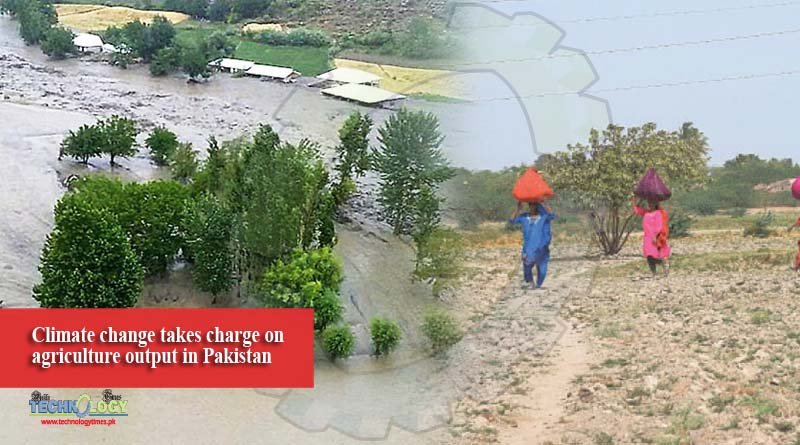Agriculture sector in Pakistan bear huge damages due to climate change in the outgoing year, while cotton import alone is likely to spike the import bill by over $1.5 billion.
 Climate change mostly affected cotton, maize, paddy and vegetables in both Punjab and Sindh in this year. Due to severe damage to cotton in Sindh, a large number of growers had removed the crop from their fields. The crop was infested by pests following the spell of rains.
Climate change mostly affected cotton, maize, paddy and vegetables in both Punjab and Sindh in this year. Due to severe damage to cotton in Sindh, a large number of growers had removed the crop from their fields. The crop was infested by pests following the spell of rains.
Former chairman, Sindh Chamber of Agriculture Kabool Muhammad Khatian said due to the unavailability of BT cotton, average yield was 16 maunds/acre in the country at a production cost of Rs40,000/acre. Thus, around half of the production was just the cost of cultivation.
He suggested policy institutions to develop cotton seed, which takes several years. So far, none of the research institutes including Tandojam, Multan and Faisalabad have developed any variety of cotton seed and government’s promises regarding improvement of fertility and subsidy have not been fulfilled.
He said it was not only weather but also corruption that ruined growers, as pest resistant seeds could have sustained the bad weather. According to estimates by the stakeholders, production of around 10 million bales was expected against revised government target of 10.5 million bales.
The country would have to import around 6.0 million bales. Of which, contracts have already been made for the import of 4.0 million bales. With opening of Torkham border, cotton imports were also made from Afghanistan.
Due to high temperatures, cotton was affected in Sindh and Punjab while paddy crop was affected in Dadu, Shahdadkot, Shikarupur, Larkana and Jacomabad districts in upper Sindh. Maize was affected in Punjab.
Unexpected rainfall in August and September affected harvesting of cotton and onion, while production of tomatoes was also affected that resulted in a huge increase in prices.
Sindh government decided not to buy wheat from growers this year, which affected the growers and they were compelled to sell the commodity at lower rates of Rs 1,050/ 40 kg in the open market. However, prices moved upwards later on.
Paddy rates saw an increase of only Rs100 to Rs150/40kg, as rates remained around Rs1,100 compared with last year’s rates of Rs950 to Rs1,000/40kg.
Sugarcane price in Sindh was raised by Rs 12 to Rs 192/40kg, which was also termed low by the growers looking at an increase in the cost of production. Sugar however saw considerable increase in rates.
Growers have termed the year a difficult one in agriculture as dollar rates increased to Rs 158 from Rs 110 in a year, but crops did not see much appreciation despite of paddy and cotton being export crops in Pakistan .
Senior vice president, Sindh Abadgar Board Mehmood Nawaz Shah said. “Crop prices did not increase both at the export level and at domestic consumption level”.
He further said “generally speaking, the year has been a difficult one for the growers.” On the other hand, State Bank of Pakistan has suggested an increase in agriculture finance to Rs 1.8 trillion serving 6.0 million formers in FY20.
Agriculture financing continued to demonstrate growth momentum as disbursements crossed Rs 1.0 trillion mark for the first time, reaching Rs 1.17 trillion in FY19; 21 percent higher than the disbursement of Rs 973 billion in FY18.
In terms of credit demand, financial institutions were able to meet 77 percent of demand of Rs 1.51 trillion, which is an all-time high in Pakistan.
Outstanding financing portfolio also increased during the year to reach Rs 562.4 billion at end June 2019 compared to Rs 469.4 billion of corresponding period.
Further, the outreach in terms of number of agricultural borrowers increased to 4.01 million borrowers with growth of eight percent during FY19 compared with 3.72 million borrowers during FY18.
